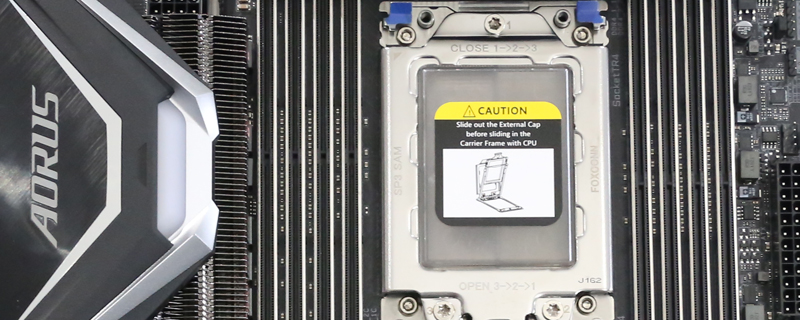Gigabyte X399 Aorus Extreme Review
Conclusion
Gigabyte has been making massive improvements to their motherboards in recent times. Whereas they were once the powerhouses of early gaming motherboards, they seemed to lose their way a few years ago and made products which were good, but usually had a flaw somewhere, or a bad design decision.Â
With the launch of the 2nd Generation of Ryzen Threadripper CPUs and their attendant X399 chipset, the big manufacturers have all produced motherboards that are replete with their high-end feature sets and the Aorus Extreme is no exception. There is an exception that Gigabyte didn’t actually provide us with our review sample, largely because there are always politics behind the scenes and companies prefer people who blindly love their products without necessarily testing them in depth. We’ve always felt you can’t review something without taking it to the limits, and that doesn’t always make us popular.
However, with the Gigabyte X399 Aorus Extreme once we’d obtained a motherboard to test we’re left wondering quite why Gigabyte didn’t have the confidence in it to let us loose. It has a massive feature set that ticks all the boxes of elements we’d expect to find on a high-end motherboard. From the obvious things like the Aorus RGB lighting and Gigabytes excellent and unique use of a four pin RGB LED strip header letting you have whites that are actually white, through fully braced PCI Express and DIMM slots, a massive amount of fan and pump headers, great looks and all the heat spreaders you could hope to find. It’s proper belt and braces stuff. As you could see on the previous page, there appears to be a section of the motherboard that gets hot under extreme loading but hasn’t got a thermal monitor built in so we did spend a little bit of time trying to keep everything stable until we discovered the root of the issue and could point a fan in its direction.
Overclocking saw good results, even if the scores didn’t quite hit the heights of the ASUS Zenith or MSI MEG. It’s worth pausing here to mention the BIOS. Usually, we don’t spend too much time discussing the BIOS because the days in which they required a degree to understand and a months holiday to refine are far behind us. However, the BIOS installed on the X399 Aorus Extreme does feel like it is in desperate need of refinement. It isn’t as user friendly as a lot of the major ones on the market, nor are all the options and how they interplay with each other quite as obvious as they could be. It’s not a horror show, but if this is your first time dipping your toe into a BIOS for anything deeper than adjusting the clock and your boot devices then it requires a bit more experience and knowledge than it should, especially in the graphics-heavy BIOS’s we’re used to. Once you are up and running though, the results are good and the Precision Boost, in particular, brings fantastic results across the broadest range of benchmarks.Â
It’s good looking, has good performance, a whole host of features and connectivity options, and is reasonably priced for such a high-end motherboard. Usually, at this point, we’d tell you which award we’re giving it, but awards exist to let the marketing department of companies shout loudly in their advertising about how well their product scored on a reputable review site. The Gigabyte marketing department didn’t want to help us out by providing a review sample, preferring to send it to sites which might not point out any issues. Thus giving the X399 Aorus Extreme its deserved award would only help them out, and until they help us out it’s pointless to do so.
We don’t really feel the board is worthy of the extreme name, because other than the VRM heatsinks and the 10GBe it isn’t. Its OK but in all honesty this would have been called something like the “Gaming 7” a few years ago. It’s not capable of holding a manual overclock on the 2990WX without fans blowing at the VRM’s AND at the back of the board, the BIOS is full of annoying glitches, no one understands why you have to turn the volts down to get it to overclock. It’s definitely capable but its far from Extreme.
The item we would like to close with though is this: We emailed Gigabyte numerous times about the issues we come across in our extensive testing (6 complete days) and we didn’t get a single reply. If they won’t reply to us then what will an end user experience? We could chuck words around like childish and head in the sand but seeing as we are actual enthusiasts and care about our industry we would prefer to go on record with – deeply worrying. It’s certainly a sign of where things are heading, and this sign is not pointing to a good place. Gigabyte used to have ‘Leaders of Motherboard Innovation’ as one of their quippy taglines when advertising products, in 2018 it feels more like ‘That’s Good Enough’ would be closer to the point.
Discuss your thoughts on the Gigabyte X399 Aorus Extreme in our OC3D Forums.



